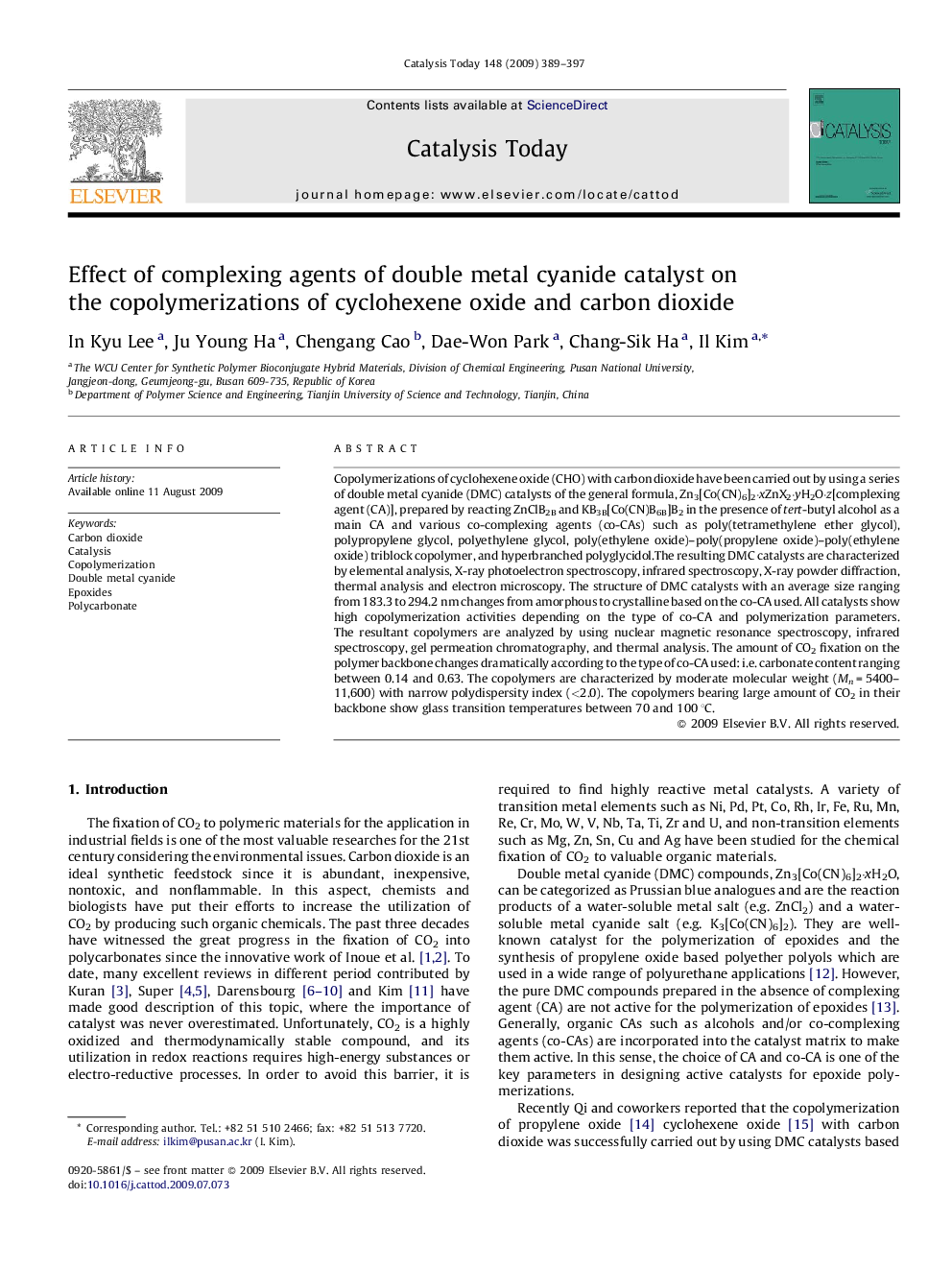| Article ID | Journal | Published Year | Pages | File Type |
|---|---|---|---|---|
| 56716 | Catalysis Today | 2009 | 9 Pages |
Copolymerizations of cyclohexene oxide (CHO) with carbon dioxide have been carried out by using a series of double metal cyanide (DMC) catalysts of the general formula, Zn3[Co(CN)6]2·xZnX2·yH2O·z[complexing agent (CA)], prepared by reacting ZnClB2B and KB3B[Co(CN)B6B]B2 in the presence of tert-butyl alcohol as a main CA and various co-complexing agents (co-CAs) such as poly(tetramethylene ether glycol), polypropylene glycol, polyethylene glycol, poly(ethylene oxide)–poly(propylene oxide)–poly(ethylene oxide) triblock copolymer, and hyperbranched polyglycidol.The resulting DMC catalysts are characterized by elemental analysis, X-ray photoelectron spectroscopy, infrared spectroscopy, X-ray powder diffraction, thermal analysis and electron microscopy. The structure of DMC catalysts with an average size ranging from 183.3 to 294.2 nm changes from amorphous to crystalline based on the co-CA used. All catalysts show high copolymerization activities depending on the type of co-CA and polymerization parameters. The resultant copolymers are analyzed by using nuclear magnetic resonance spectroscopy, infrared spectroscopy, gel permeation chromatography, and thermal analysis. The amount of CO2 fixation on the polymer backbone changes dramatically according to the type of co-CA used: i.e. carbonate content ranging between 0.14 and 0.63. The copolymers are characterized by moderate molecular weight (Mn = 5400–11,600) with narrow polydispersity index (<2.0). The copolymers bearing large amount of CO2 in their backbone show glass transition temperatures between 70 and 100 °C.
